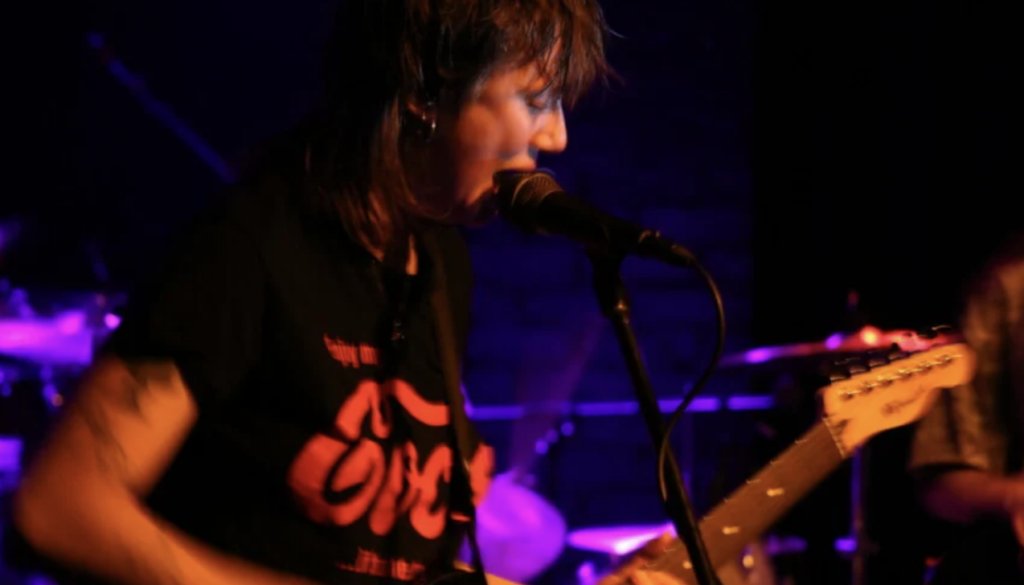KC Public Library brings in writer Skiz Fernando Jr. for presentation on the legacy of rap legend MF Doom
This Thursday, The Kansas City Public Library presents “MF DOOM, Rap’s Masked Iconoclast” with author and journalist S.H. “SKIZ” Fernando Jr. in conversation with KCUR’s Paul Nyakatura about his new biography of masked villain and rapper MF Doom entitled The Chronicles of DOOM: Unraveling Rap’s Masked Iconoclast.
Ahead of the event, we hopped on Zoom with Fernando to discuss how he put together the story of the never-boring, always boundary-bushing musician that was Doom.
 The Pitch: Where do you start when telling a story about MF Doom?
The Pitch: Where do you start when telling a story about MF Doom?
Skiz Fernando Jr.: That’s a good question, especially if you’ve never interviewed him before. He has the reputation of being a very private person who doesn’t divulge details about his life. So, the first place he starts, for me, was the internet. I would say about 50% of the book is open source research. The internet has all of Doom’s original interviews on YouTube, a lot of articles about ‘im and stuff like that. That’s where I started.
Coming into this project, I also had a bit of an advantage because I used to run an independent record label myself in the nineties called Wordsound. We were not strictly hip hop, but we did put out a lot of hip hop and, just by virtue of being in the indie scene, I knew a lot of the other people who put out independent records.
Doom was the underground champ. He was the indie champ. Between 2000 and 2005, I think he put out like six or seven records on different indie labels, so that was the next place that I went. As I said, I knew a lot of those guys so I started interviewing them. People like Peter Agoston, who was the guy behind Female Fun Records and put out the first Special Herbs compilation, the instrumental beats that Doom did.
Another guy that I tapped was Tom Brown from Lex Records in England. Back in the day, he used to work at Warp and we used to do business with him. We kind of reconnected. He was responsible for a lot of Doom’s later work on Lex Records. I basically started from the outside in and just started working my way in, contacting many people who knew Doom or had worked with him. By the end of it, I talked about 50 people, so that’s pretty good considering the villain was super deep undercover.
This isn’t the first book you’ve written that requires a whole lot of work. Your Wu-Tang Saga, I feel. is really good prep work for writing a book on MF Doom in terms of having to unravel and trace all of these disparate stories that come together.
Only thing with the Wu-Tang book is, I already had a lot of the research done, because during the ’90s, I was probably the one journalist that spent the most time with them. Different magazines would get me to do features on them, so I had a really big archival file. I had spent time with each of the guys and I had pretty good in-depth interviews.
It was a very different type of project with Doom. You think one dude would be easier to track, but he’s all over the place, man. He lived so many lifetimes in one life. It’s incredible. He had so many different eras of his life so it was very interesting to do the book, I’ll say that.
For The Chronicles of Doom, was there a person that was most difficult to get hold of?
Yeah, I would say, his brother, Timbaza–who also was a fountain of information, so it was worth it. I felt like almost like a spy, trying to cultivate an asset, because you can’t just call someone up and say, “Oh, I’m doing a Doom book,” and we do an interview. You got to tell people where you’re coming from, what your purpose is, that you’re not trying to do an exploitation piece, that you’re coming at it from the right place–’cause, as we established, Doom was a private person and his friends and family respected his privacy, which I totally respect as well.
So, I would say Dimbaza, who was Doom’s second brother below Subroc. I think he was four years younger than Doom. After the death of their other brother, Subroc, it was just Doom and Dimbaza spent a lot of time together hanging out. He was an amazing source to have for those missing years when Doom dropped out of sight, between the time that he lost his record deal with Elektra and the time that he came back and reinvented himself as MF Doom. We’ve got a lot of good information about that time through Dimbaza, but it was not easy to get to him and to gain his trust, really.
The idea of all this stuff that’s online–when I’ve talked with other folks, the idea that YouTube is such a font of research material at this point, not just for interviews and stuff like that, but live performances and things like that, which can offer glimpses that a decade ago, wouldn’t have been possible without getting on VHS tape trading forums or things like that. Was being able to view very old archival performances helpful in tracing his development of this persona?
Oh, of course. I mean, I watched all of that stuff. As you said, there’s a lot of shows up there, and where the actual live shows came in handy was when I was talking about the Doombot situation, because that allowed me to actually go and see some of these shows for myself and to see if it was really Doom or a Doombot.
That was a big controversy for a while–Doom basically was sending people out with the mask to perform in his stead. The funny thing is that, initially, he got a backlash for it, but then it’s like people were coming to the shows just to see if it was really him, so he didn’t really suffer the typical backlash that artists would get if they tried to pull something like that.
To me, that’s vintage Doom. He has this very special relationship with his fans that I’ve never seen with any other artists and his and obviously, his fans have a special relationship with him. They go all out for it for him, so be careful what you say about doing in the course of your research and stuff like that.
Did you ever get to talk to anybody who was the Marvel records that he sampled so much?
Well, really, most of those came from a lot of TV shows that he sampled. The whole Fantastic Four series that was Hanna-Barbera. So, I think the Marvel stuff that he sampled was really the artwork that he used for a lot of the covers of the Special Herbs series. That’s why a lot of his covers had to be changed eventually–cease-and-desist orders–but it’s interesting to note that, as early as maybe a year or two ago, Marvel did this huge homage to Doom in a comic so, you know, at first they might’ve been pissed off that Doom was stealing the stuff, but in the end it worked to their advantage, ’cause some of Doom’s cool quotient rubbed off on that, which is how a lot of these brands have kind of used Doom, and he used them, too.
Notably, Doom’s mask is a mask from Gladiator, and when Gladiator 2 came out, they were selling popcorn buckets that had that mask on it, and the people buying it were Doom fans. They were selling out everywhere because people were just like, “You can get one and it’s not going to cost you an arm and a leg.”
Exactly, yep. That’s another great example of that.
When you do an appearance like you’re doing at the Kansas City Public Library, what does that entail? Is it a multimedia sort of event, or is it just more of a discussion?
Yeah, it’s going to be a conversation. I did a book tour for this book when it first came out. I was going all over the country and this was the best format because it allows a lot of obscure information to come out, and it also allows the audience to ask questions, too, which is important too, because a lot of Doom fans show up at these events, and sometimes they ask a lot of stuff that’s not even in the book, which I’m happy to answer too, because obviously, I found out a lot more about Doom that I could fit into a book.
There’s a lot to talk about. I love talking about Doom too, because he’s such an interesting character. There’s been no one else that you can really compare him to and I don’t think there’ll ever be anyone else like him. He’s an original. That’s why people appreciate him so much.
Do you have a favorite story that didn’t make it into the book that you enjoy sharing most when you do these appearances?
I can give you one right now which kind of comes to mind. A lot of times when I was doing the book, I’d be talking to friends of his and they were conflicted because they wanted to respect Doom’s privacy, but they still wanted information come out about it that the public didn’t know and this is one of those stories. This comes from a lady named Courtney Brown, who was Doom’s assistant for several years in the mid 2000s.
She was telling me everyone has this impression of Doom being the villain and being mischievous and stuff like that, but he was also a really good human being. She told me that, at one point, her grandmother had died and she needed help to pack up all the furniture of the house and she asked Doom to help her and Doom took the subway over from New York on a snowy day and, on his own dime, came and helped her pack up all that stuff.
These are things that people don’t know about Doom–that he was just a genuine guy who cared about his friends and helped his people, you know? I wish I could’ve included more stuff like that in the book. There’s definitely a lot of stories. A lot of funny stories. A lot of sad stories, too, when you get down to it.
The Kansas City Public Library presents “MF DOOM, Rap’s Masked Iconoclast,” with author and journalist S.H. “SKIZ” Fernando Jr. in conversation with KCUR’s Paul Nyakatura about his new biography of masked villain and rapper MF Doom entitled The Chronicles of DOOM: Unraveling Rap’s Masked Iconoclast this Thursday, March 13, at its Lucile H. Bluford Branch. Details on that event here.





